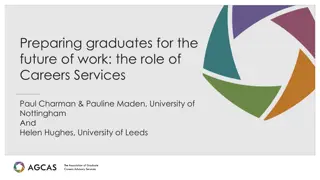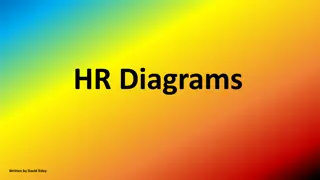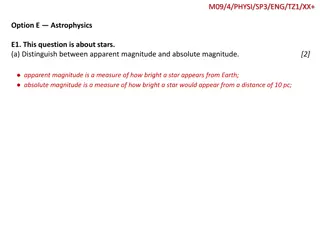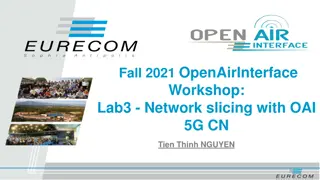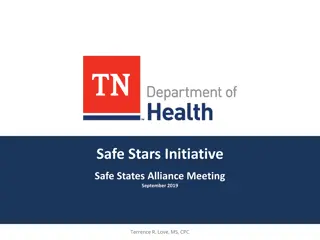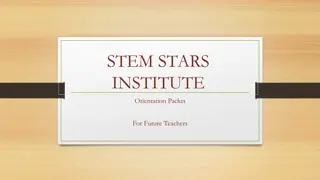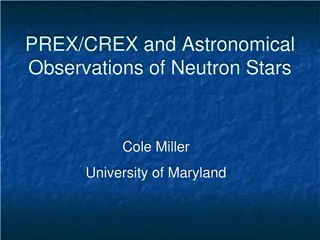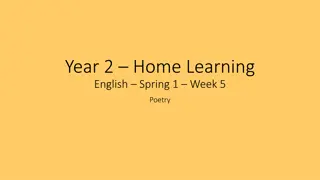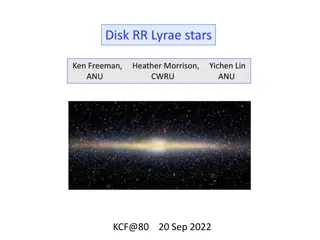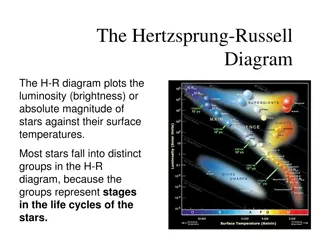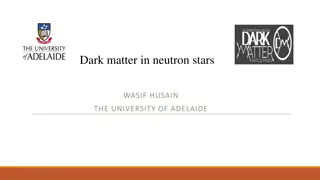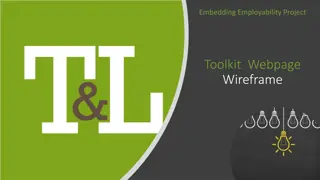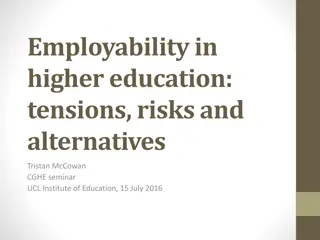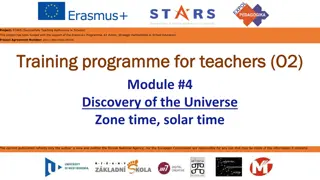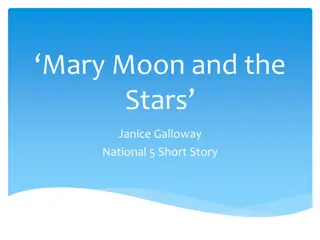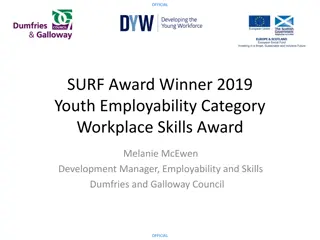
Advancing Student Employability: TEN-STARS Network Initiatives
The Employability Network of STARS (TEN-STARS) aims to enhance student employability and graduate success through the collaboration of researchers and higher education leaders. Members work on initiatives like co-authoring a special issue journal and sharing university approaches to advancing employability. With a focus on defining, assessing, and credentialing employability alongside industry partnerships, TEN-STARS strives to equip students with the necessary skills and attributes to excel in the evolving world of work.
Download Presentation

Please find below an Image/Link to download the presentation.
The content on the website is provided AS IS for your information and personal use only. It may not be sold, licensed, or shared on other websites without obtaining consent from the author. Download presentation by click this link. If you encounter any issues during the download, it is possible that the publisher has removed the file from their server.
E N D
Presentation Transcript
MESSAGE FROM YOUR CONVENOR PROFESSOR SHELLEY KINASH The Employability Network of STARS (TEN-STARS) brings together an international community of researchers and higher education leaders. The mission of TEN-STARS is to advance student employability and graduate success. Employability means that, through the initiatives, encouragement and support of higher education institutions, students develop the knowledge, skills, attributes, reflective disposition and identity they require to achieve their graduate goals and contribute to our world as emerging leaders. TEN-STARS commenced at the 2018 STARS Conference in Auckland. Membership is open to delegates who attended the conference and those who joined after. The first activity of TEN-STARS is to author and edit a Special Issue of The Journal of Teaching and Learning for Graduate Employability. The ongoing network portal is http://GraduateEmployability.com and another inaugural output of The Network is to author and post Brief Showcases of Excellence: University Approaches to Advancing Employability.
AGENDA FOR INAUGURAL MEETING Time 145 2pm 2 215pm 215 230pm 230 245pm 245 3pm 3 315pm Topic Co-create Network Goals Overview Special Issue Journal & Milestones Speed dating Good practice principles for journal writing Develop your pitch Wrap-up and considerations
HOW TO JOIN THE EMPLOYABILITY NETWORK Register online to join the network through http://graduateemployability.com/ Please invite other employability researchers / leaders to formally join TEN-STARS.
COLLABORATIVE GROUP NETWORK GOALS AND GUIDING PURPOSE What are the overarching goals of the Network? How will we achieve these goals? How will we measure impact and success of the Network?
NETWORK GOAL 1: SPECIAL ISSUE JOURNAL OF TEACHING AND LEARNING FOR GRADUATE EMPLOYABILITY Members of the Network co-author / author empirical publications for JTLGE. Co-Editors: Professor Shelley Kinash and Dr Trina Jorre de st Jorre
THE JOURNAL OF TEACHING AND LEARNING FOR GRADUATE EMPLOYABILITY JOURNAL FOCUS How graduate employability can be defined, assessed and credentialed in a rapidly evolving world of work Employability and the achievement of higher education learning outcomes, graduate attributes, competencies and capabilities Work-integrated learning experiences and assessments designed to enhance employability Industry and education partnerships and perspectives for lifelong learning and continuing professional development. Retrieved from: https://ojs.deakin.edu.au/index.php/jtlge/
YOUR PAPER Empirical (qualitative or quantitative) Ideally, data you have already collected Think multi-institution Whose ethics?
THE JOURNAL OF TEACHING AND LEARNING FOR GRADUATE EMPLOYABILITY JOURNAL SPECIFICATIONS Content: Submissions should address issues relating to the Journal's scope and readership. Length: Submissions should be between 6,000 and 8,000 words (including endnotes and references). Abstract: Submissions should include a 250 word abstract. Keywords: Below the abstract a list of up to eight (8) key words, for the purpose of indexing, must be included. Spacing and Paragraphing: Submissions should be single-spaced with no indenting for paragraphs and one line spacing between paragraphs. Referencing: APA. Retrieved from: https://ojs.deakin.edu.au/index.php/jtlge/about/submissions#authorGuidelines
MILESTONES 11 July 2018 TEN-STARS Inaugural Meeting 18 July 2018 Formal invitation to registered TEN-STARS members to author journal paper 1 August 2018 Deadline for acceptance of invitation 15 August 2018 Zoom Check-in 5 September 2018 First draft 19 September 2018 Second draft 28 September 2018 Deadline (no extensions) for full papers 1 October 2018 Papers sent out for review 1 November 2018 Deadline (no extensions) for reviews 5 November 2018 Reviews sent out to authors 3 December 2018 Deadline (no extension) for amended papers 17 December 2018 Accepted papers sent to Journal for publication.
SPEED DATING UNDERLYING QUESTIONS Would I like to co-author with this person? Would this be a good source of multi-institutional data? Would this person make a good peer review partner (non-author)? Would this be a valuable mentor/mentee relationship?
SPEED DATING PROMPTING QUESTIONS What is your role in employability? Have you published employability research? What institution are you from? What do you see as being the focus of your paper? Do you see yourself as an early career employability researcher?
GOOD PRACTICE PRINCIPLES FOR JOURNAL WRITING Abstract Executive summary Include the question, the context / problem, the method, the results, the argument and key takeaways. Introduction Context / rationale / problem Why it matters Argument Non-empirical
GOOD PRACTICE PRINCIPLES FOR JOURNAL WRITING Literature Review Funnel Empirical Leads to questions Methods and Methodology The difference Replicable / recipe Past tense
GOOD PRACTICE PRINCIPLES FOR JOURNAL WRITING Results Aligned Discussion? Data Tables, graphs and figures Discussion Theory Link back to questions Link back to literature review The So What Factor Remember cohesive argument
GOOD PRACTICE PRINCIPLES FOR JOURNAL WRITING Conclusion Recommendations Draw together, don t stop Leave an Impact / Punch Strengths and limitations For further research References No secondary referencing Reference JTLGE Reconcile in-text and end-text.
DEVELOP YOUR PITCH Partners 1 minute pitch The So What Factor The Argument Data? Compelling In-built feedback
WRAP-UP Send out information for Showcases Register to join the Network Portal? https://graduateemployability.com/ Employability Research Repository - Network authors only? - Members only or open access? Evaluation.
FURTHER RESOURCES Belcher, Wendy. (2009). Writing your journal article in twelve weeks: A guide to academic publishing success. https://wendybelcher.com/writing-advice/writing-your-journal-article-in- twelve/ Kinash, Shelley. (various). Screencasts. https://works.bepress.com/shelley_kinash/ Kinash, Shelley. (2018). University Matters Podcast Let s get published. https://player.fm/series/university-matters-2361766 Other key resources that you want us to add to this?


